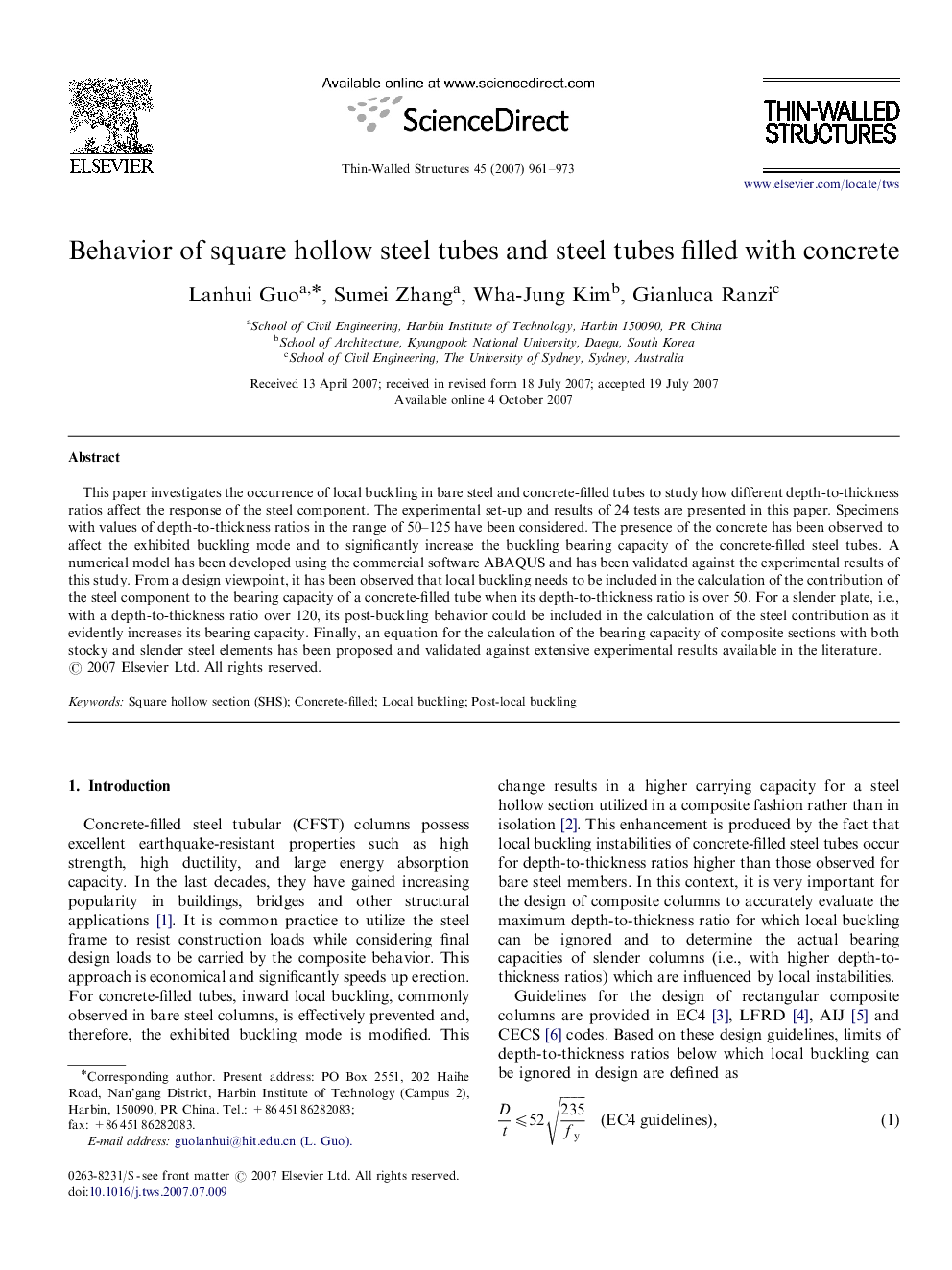| Article ID | Journal | Published Year | Pages | File Type |
|---|---|---|---|---|
| 310031 | Thin-Walled Structures | 2007 | 13 Pages |
This paper investigates the occurrence of local buckling in bare steel and concrete-filled tubes to study how different depth-to-thickness ratios affect the response of the steel component. The experimental set-up and results of 24 tests are presented in this paper. Specimens with values of depth-to-thickness ratios in the range of 50–125 have been considered. The presence of the concrete has been observed to affect the exhibited buckling mode and to significantly increase the buckling bearing capacity of the concrete-filled steel tubes. A numerical model has been developed using the commercial software ABAQUS and has been validated against the experimental results of this study. From a design viewpoint, it has been observed that local buckling needs to be included in the calculation of the contribution of the steel component to the bearing capacity of a concrete-filled tube when its depth-to-thickness ratio is over 50. For a slender plate, i.e., with a depth-to-thickness ratio over 120, its post-buckling behavior could be included in the calculation of the steel contribution as it evidently increases its bearing capacity. Finally, an equation for the calculation of the bearing capacity of composite sections with both stocky and slender steel elements has been proposed and validated against extensive experimental results available in the literature.
